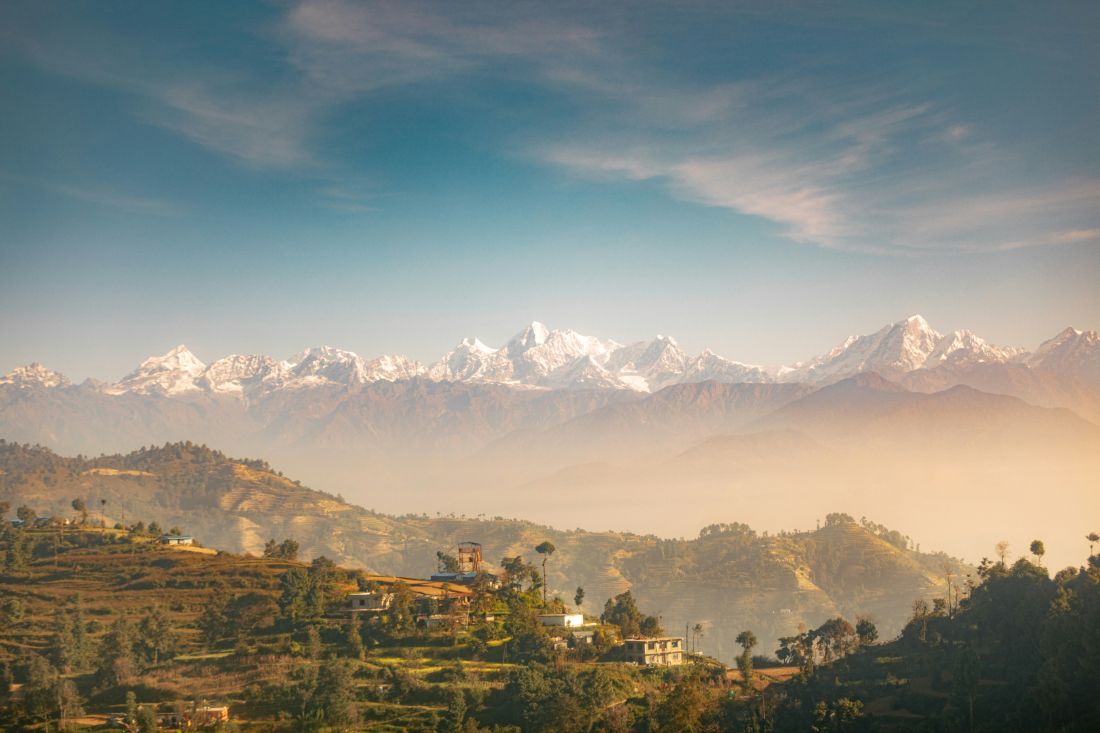Nepal is a country of dramatic contrasts — from the towering peaks of the Himalayas to lush valleys, sacred temples, and vibrant local culture. With four distinct seasons and varied altitudes, the best time to visit depends on whether you’re trekking, sightseeing, or seeking serenity. Here's a seasonal guide to help plan your perfect Nepal journey.
Autumn (September to November) — Best Overall Time to Visit
Why go:
Autumn offers clear skies, crisp air, and spectacular views of the Himalayas. It’s the most popular time for trekking in regions like Everest Base Camp, Annapurna, and Langtang, as post-monsoon air clears the haze. Cultural festivals also take place across the country.
Crowds & Costs:
This is peak season, especially on popular trekking routes. Book teahouses and permits early. City hotels remain reasonably priced if booked in advance.
Spring (March to May) — Best for Trekking & Rhododendrons
Why go:
Spring brings mild weather (15°C–25°C) and stunning rhododendron blooms across the trails. It’s also great for trekking, with good visibility and comfortable temperatures in the hills. Wildlife spotting in Chitwan National Park is excellent.
Crowds & Costs:
Second-busiest season after autumn. Some trails are crowded, but there are plenty of offbeat routes. Prices are stable and reasonable for most services.
Winter (December to February) — Best for Peace & Cultural Exploration
Why go:
While the mountains are very cold, lower elevation areas like Kathmandu, Pokhara, and Lumbini enjoy clear skies and fewer tourists. Great for short hikes, temple visits, and spiritual retreats.
Watch out for:
High-altitude passes may be closed due to snow. Nights in the hills can be very cold — pack accordingly.
Crowds & Costs:
Off-season for trekkers, so trails and hotels are quieter. Excellent time for budget travel and peaceful exploration.
Monsoon (June to August) — Best for Lush Scenery & Cultural Immersion
Why go:
Expect heavy rain, especially in the afternoons, but the valleys turn lush and green, and there are fewer tourists. Great for cultural travel, photography, and exploring rural Nepal.
Watch out for:
Landslides and slippery trails can affect trekking. Some remote areas may be inaccessible during peak rain.
Ideal for:
Travelers seeking off-season serenity and unique cultural experiences.
Key Events to Plan Around
-
Dashain Festival – September/October; Nepal’s biggest Hindu celebration, filled with rituals and family gatherings.
-
Tihar Festival – October/November; the festival of lights, similar to Diwali.
-
Holi Festival – March; celebrated with colors, music, and joy across the country.
-
Buddha Jayanti – May; marks the birth of Buddha, celebrated in Lumbini and Buddhist sites.
Final Verdict
| Travel Style | Best Time to Visit |
|---|---|
| Best Trekking | September – November |
| Wildflowers & Wildlife | March – May |
| Budget & Peace | December – February |
| Green Scenery & Culture | June – August |
For iconic Himalayan treks and vibrant festivals, autumn is the prime time. Prefer blooms, wildlife, or fewer crowds? Spring and winter each offer their own magic.
Let us design your Nepal adventure — whether you’re chasing summits, silence, or sacred stories.
Feature Image Credit - Photo by Avel Chuklanov on Unsplash

